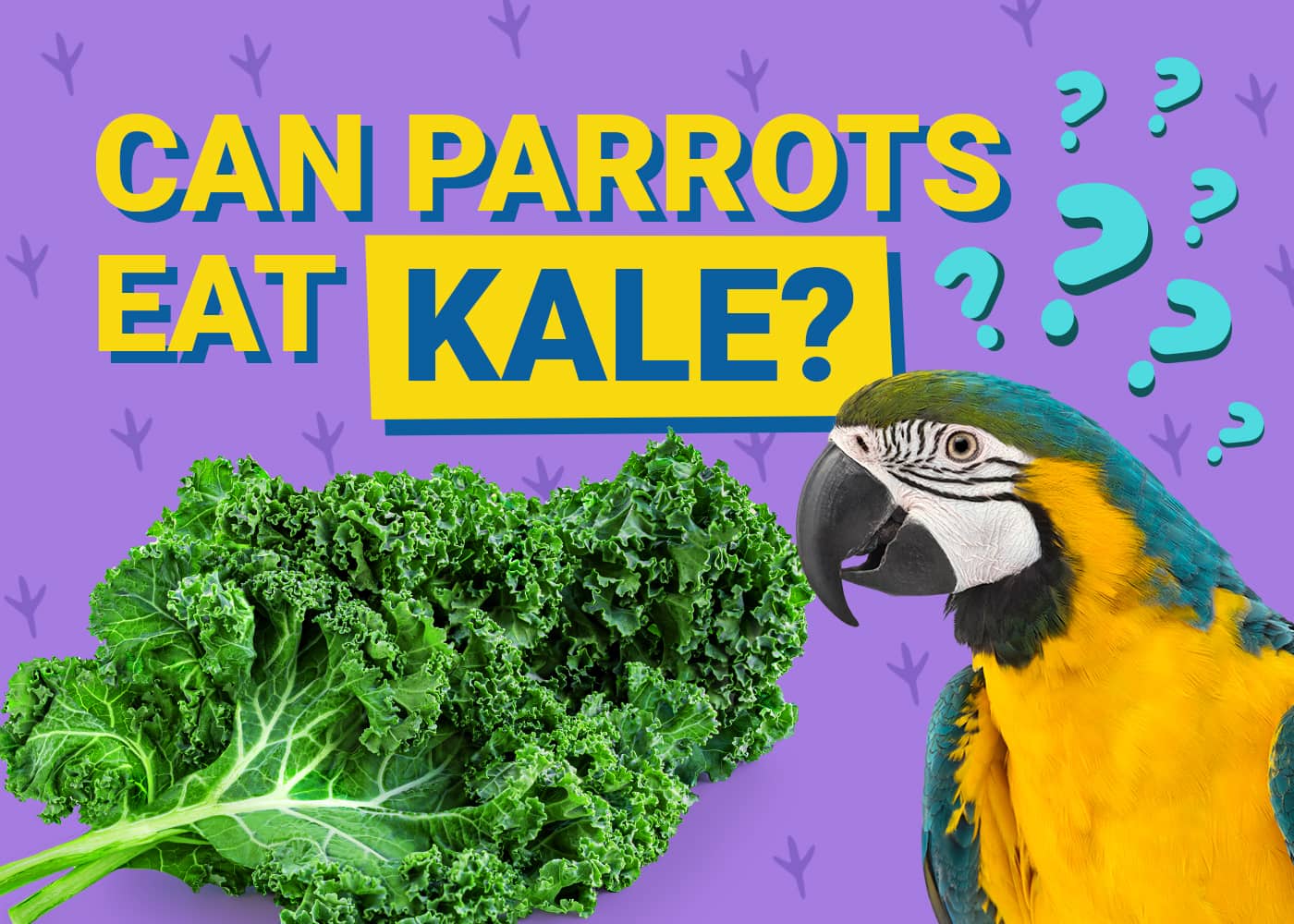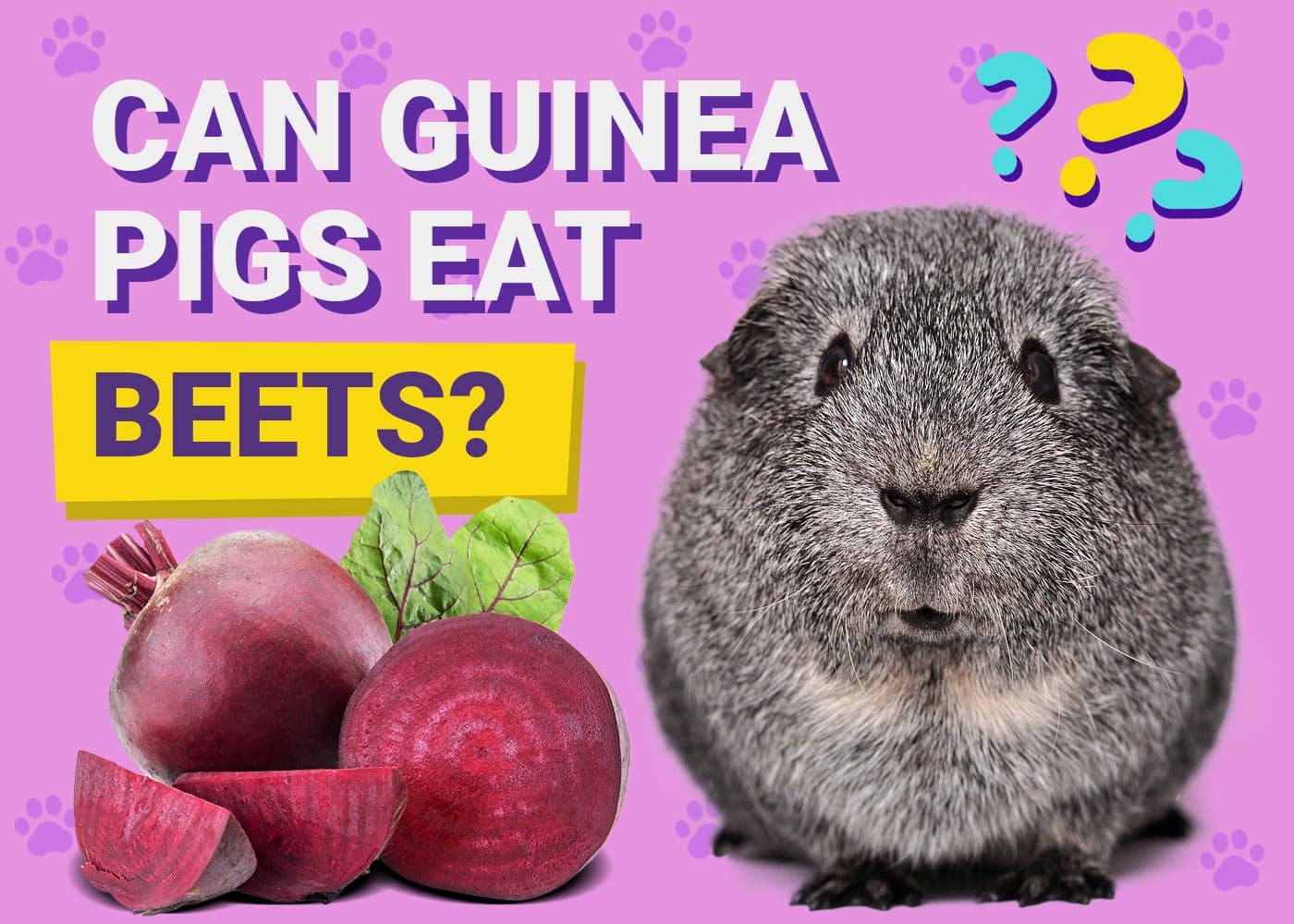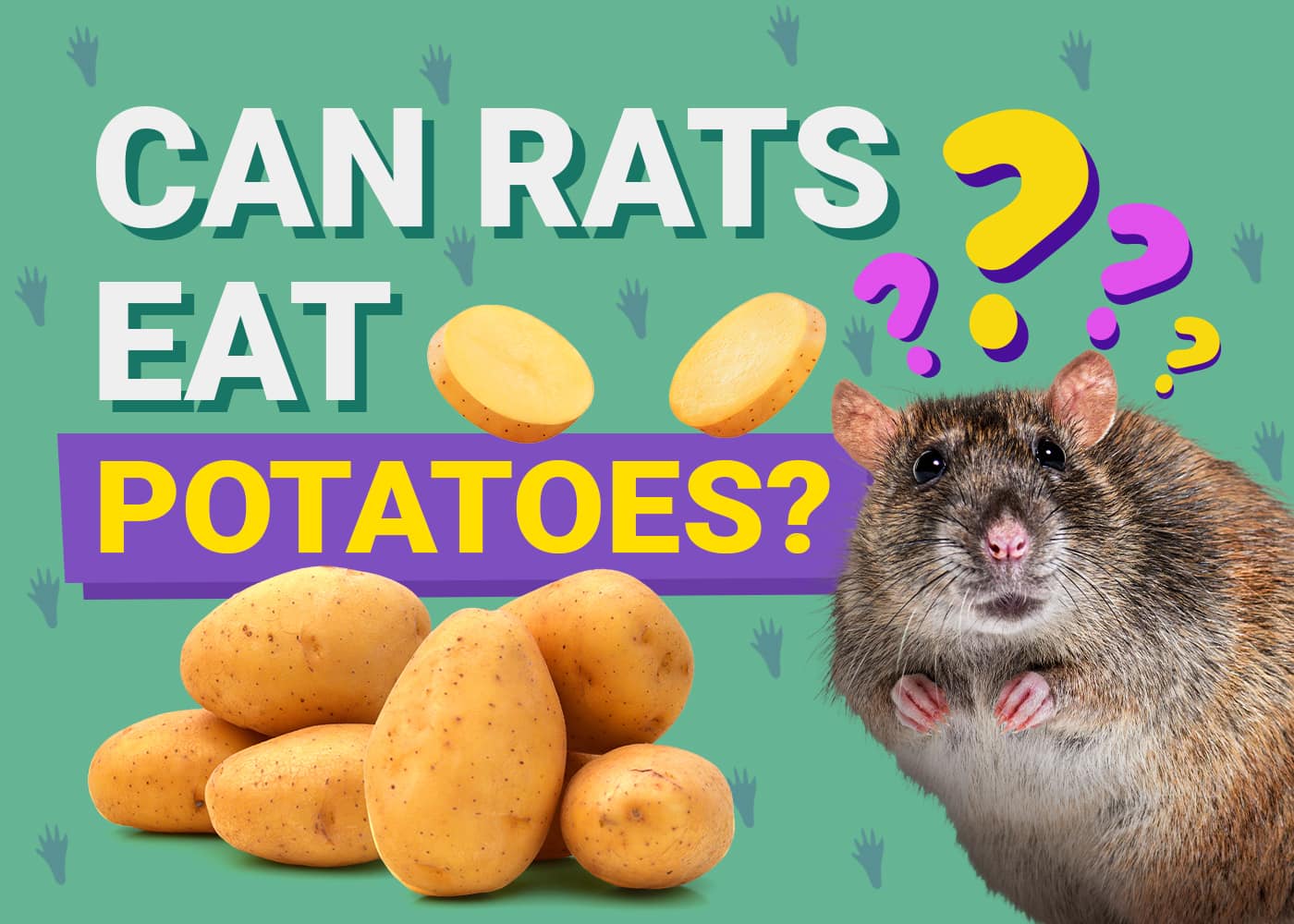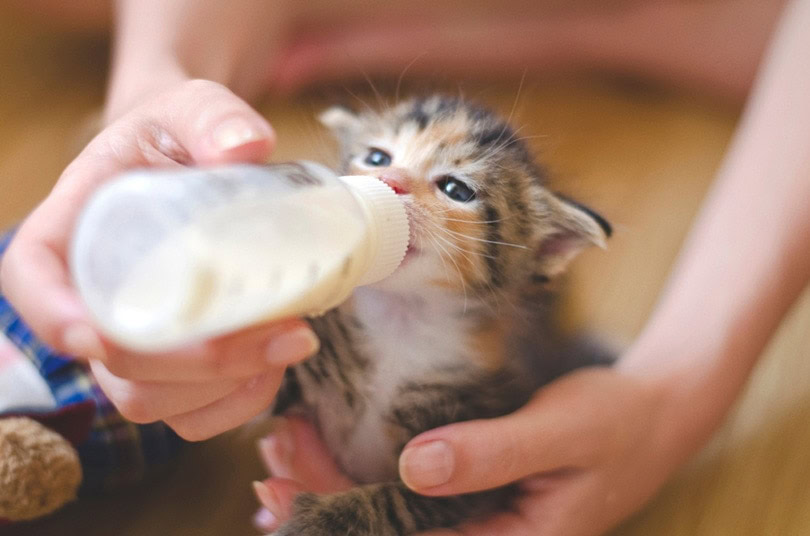VET APPROVED

The information is current and up-to-date in accordance with the latest veterinarian research.
Learn more »Click to Skip Ahead
If you own a parrot, you might already be familiar with many selections of fresh foods they can eat. If nothing more, you know how critical fresh veggies are in their diet. Birds eat more than just seeds and nuts. Fresh foods are equally important to their diet, if not more so than these traditional items.
You’ll be happy to know that kale is not only safe, it’s also an incredibly nutritious choice for your parrot. Like anything else, variety is key to making sure they get every necessary component daily; your parrot’s salad serving shouldn’t contain just kale but rather kale alongside other healthy veggies. Let’s find out precisely what this little “superfood” is and how often your parrot can eat it.

What Is Kale?
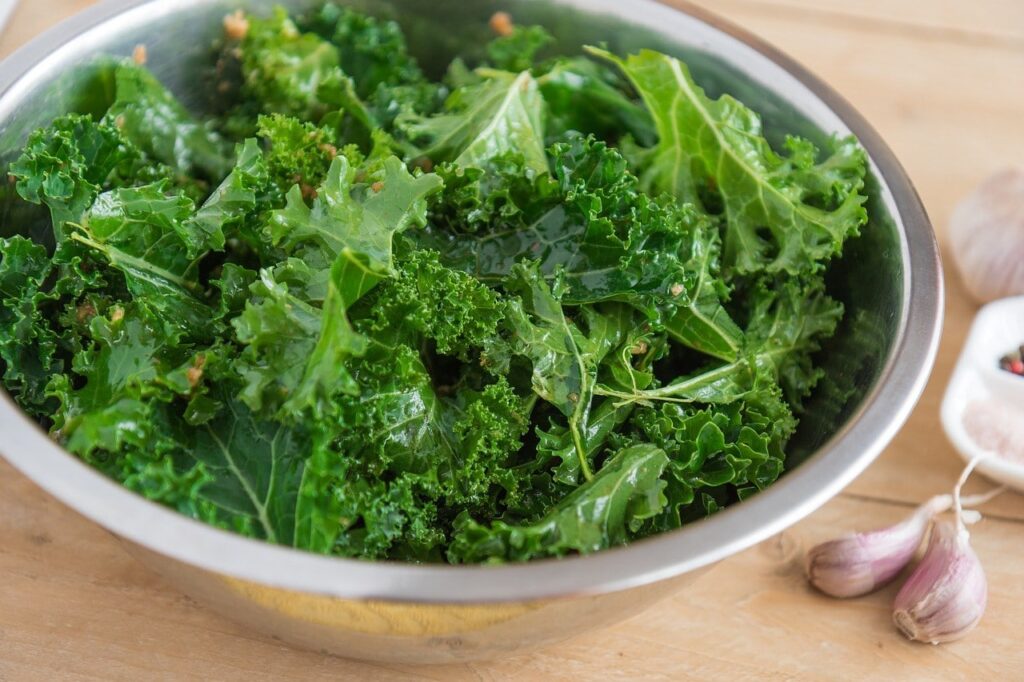
When you’re compiling a list of parrot-safe fruits and vegetables, you want to make sure you have all of your ducks in a row, so to speak. Where does kale line up? This vegetable is a powerfully nutritious choice for parrots and people alike.
Kale is a leafy cruciferous vegetable that is packed with powerful nutrition. It is also called ‘leaf cabbage’, as it belongs to the cabbage family, sporting edible leaves with stiff stalks. It is one of the most nutritious leafy greens you can find.
Not everyone will appreciate the strong taste of this leafy green—but your parrots shouldn’t be among the disapprovers. Most birds delight in the goodness of this sharp-tasting, crunchy veggie. And besides, they don’t have anywhere near the amount of taste buds as us.
Kale Nutrition Facts

Kale: 1 cup (20.6 grams) serving
| Calories/Energy: | 8.86 kcal |
| Water: | 18.5 grams (g) |
| Carbohydrates: | 0.911 g |
| Fiber: | 0.845 g |
| Protein: | 0.602 g |
| Fat: | 0.307 g |
| Calcium: | 52.3 milligrams (mg) |
| Phosphorus: | 11.3 mg |
| Potassium: | 71.7 mg |
| Sodium: | 10.9 mg |
| Vitamin C: | 19.2 mg |
It’s worth noting that while kale is high in Vitamin C, this particular nutrient is not essential for healthy parrots, as they can make their own vitamin C. However, vitamin C might be beneficial for a young or growing parrot. It may also be beneficial for a parrot who is somewhat unwell, as vitamin C may sometimes be lower in a parrot who is unwell.
Health Benefits of Kale
Kale is one of the most nutritious vegetables humans can eat. Much of the same sentiment extends to our parrot friends. It is advantageous to have in their diet. Among other leafy greens such as spinach and dark leaf lettuce, kale’s major draw is that as a vegetable it has a far broader nutritional profile than almost all fruits.
For instance, the low carbohydrate content of kale (most of which is fiber) means that it’s easier to incorporate kale into a parrot’s diet than fruits. This is because many fruits contain carbohydrates in amounts unfavorable to a parrot’s diet – in fact, these carbohydrates are what afford fruits their sweetness! Excessive consumption of fruits is detrimental to the diet of most pet parrots, as it quickly leads to weight gain. This sets pet parrots apart from wild parrots, who expend anywhere from 10–15 more energy than their pet counterparts (which justifies a high-energy diet for them).
In addition, the chief vitamin in most fruits is vitamin C. While not a detrimental vitamin by any means, as mentioned above, vitamin C is not essential for parrots. As such, this benefit of fruits is largely not transferable to parrots. Vegetables often contain vitamin C as well, but they almost always contain a much more favorable assortment of other vitamins and more importantly, minerals.
How to Feed Your Parrot Kale
Your bird will most likely accept kale if you offer it to them. Kale, along with other leafy greens, are usually parrot favorites. You need to use no particular tactic when giving your parrot kale because it is easy for them to pull apart with their beaks.
However, you will want to make sure that you buy organic whenever possible. There is a risk of pesticide residue if it isn’t organic, so wash the leaves thoroughly before serving otherwise.
When you offer your parrot kale, you can give it to them as a standalone snack or a few pieces in a medley of other fresh foods.
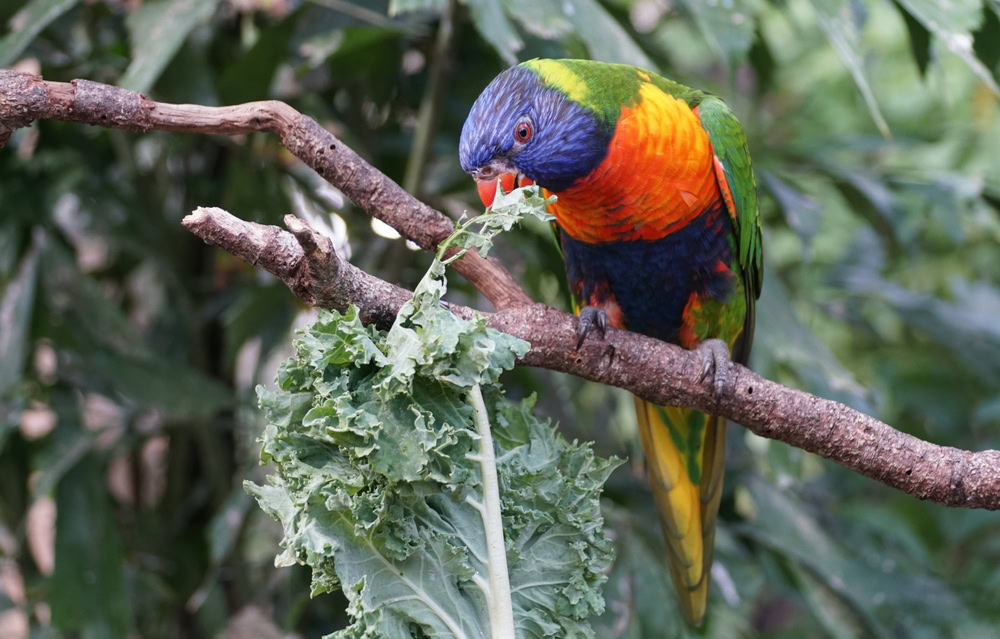
Things to Consider
Kale is a brilliant snack selection for your parrots. However, it doesn’t have every component necessary for health; for example, it’s not full of much sugar or carbs. Make sure your parrot’s diet is well-rounded, as even too much of a good thing can be bad.
Daily snacking is fine, but make sure to give your parrot lots of other veggies, fruits, nuts, and seeds to enjoy. The bulk of your parrot’s diet, however, should be a species-appropriate pellet.
As the diet of pet parrots is highly complex, it’s important to discuss your pet’s nutritional needs with your veterinarian on a regular basis to ensure that they are receiving the correct amount of nutrition regardless of their life stage. Contrary to popular belief, a parrot’s diet doesn’t stay the same throughout their life; in fact, it doesn’t even stay the same throughout a year, as their nutritional needs shift even when they are annually molting.

Final Thoughts
So, now you have learned that kale is not only non-toxic and safe for your parrots but also an ideal fresh green to add to their diet. Parrots love the taste, filling their diet with beneficial vitamins and minerals.
Plus, there is next to no natural sugar or harmful additives. Of course, even though it is so healthy, moderation is necessary. You must provide your parrot with a medley of items to provide a well-balanced, nutritious diet.
Related Reads:
Featured Image Credit: har Beck, Unsplash
